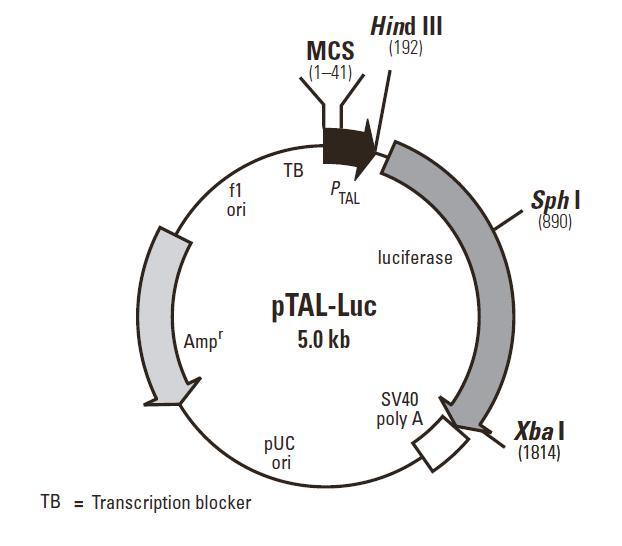
|
品牌 |
酶研生物 | |||||||||||
货号 |
MY1572 | |||||||||||
规格 |
2ug | |||||||||||
价格 |
询价 | |||||||||||
货期 |
现货 | |||||||||||
pTAL-Luc is designed for analyzing enhancer sequences by assaying for expression of the firefly luciferase (luc) gene from Photinus pyralis (1). This vector contains a TATA-like promoter (PTAL) region from the Herpes simplex virus thymidine kinase (HSV-TK) promoter. Putative enhancers can be inserted into one of the MCSs. The luciferase coding sequence is followed by the SV40 late polyadenylation signal to ensure proper, efficient processing of the luc transcript in eukaryotic cells. Located upstream of the MCS is a synthetic transcription blocker (TB), which is composed of adjacent polyadenylation and transcription pause sites for reducing background transcription (2). The vector backbone also contains an f1 origin for single-stranded DNA production, a pUC origin of replication, and an ampicillin resistance gene for propagation and selection in E. coli. 载体应用pTAL-Luc is ideal for use as a negative control or for studying putative enhancers that are inserted upstream of the luciferase reporter gene. Luciferase is a highly sensitive enzymatic reporter that can be assayed by any standard luciferase-detection method, providing quantitative data on induction levels. The pTAL-Luc Vector can be transfected into mammalian cells by any standard method. For selecting stable clones, cotransfect with a vector containing an antibiotic resistance gene, such as neomycin, hygromycin or puromycin.
|
|
|||||||||||










